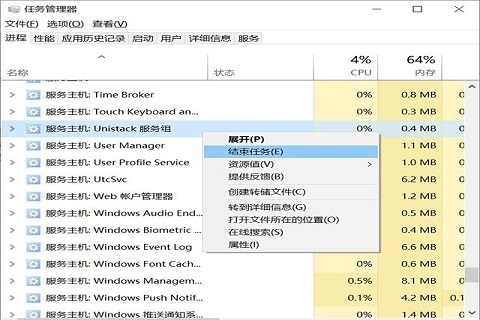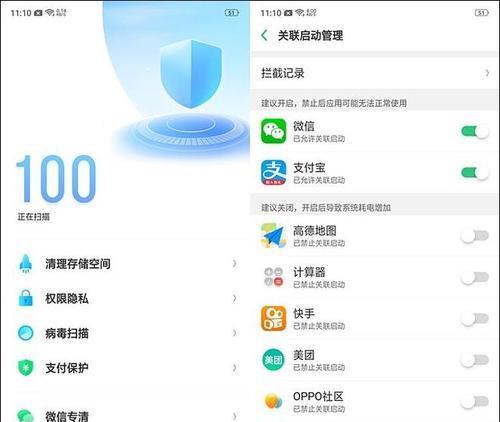 Computer Tutorials
Computer Tutorials Troubleshooting
Troubleshooting The computer won't light up, need help? How to light up the computer after assembling it?
The computer won't light up, need help? How to light up the computer after assembling it?The computer cannot light up, causing the assembler a headache. In response to this problem, PHP editor Yuzai compiled a detailed guide that covers all stages of the lighting process after computer assembly, from checking hardware connections to troubleshooting, guiding readers step by step to solve the problem. This article aims to help readers understand how computers light up and provide practical tips for solving common problems so that the assembled computer can run smoothly.

The computer cannot light up, please help?
The memory will also make a "beep" sound
↑First of all, the memory will not make a sound
What happens is a small speaker on the motherboard
And it also depends on which manufacturer your bios is from
awardbios A short sound means the system starts normally.
amibios short sound: Memory refresh failed. The memory damage is serious and the memory may have to be replaced.
The common reason why the monitor cannot light up is that the motherboard is not powered enough, that is, the voltage is not enough. It is recommended to replace the power supply. If the memory is damp, it is recommended to unplug it, clean it, and then reinstall it.
How to light up the computer after assembling it?
After all the wires are connected, power on and start directly to light up.
How to light up the newly assembled computer?
Enter the motherboard settings after startup, set the first boot to start from the U disk, insert the system U disk, and follow the prompts to create the system. After the system is successfully installed, install the driver and it will light up.
Can’t light up after the computer is installed?
Turn off the power, unplug all power supply connections, connections outside the chassis, and unplug the cards plugged into the motherboard.
1. Install the CPU on the motherboard, connect the power supply, and then short-circuit the motherboard power-on pins. If the CPU fan rotates normally and the motherboard buzzer sounds an alarm, it means that the three connected hardware devices are normal. At this time, you can Continue adding other hardware.
2. Plug in the graphics card and memory module to the motherboard and connect the monitor. Power on and start up. If you can see "No system boot disk" or "System boot failed" or other similar messages, it means that all connected hardware is normal and the reason why you cannot enter the system is that the hard disk is not found.
3. Connect the hard disk, keyboard, mouse and other external devices. If there is an error message, you can conclude that the fault is in the hardware added in the third step, and it will be very convenient to find.
How to install the system after assembling the computer and lighting it up?
Hello, after assembling the computer and lighting it up, you can follow the following steps to install the system:
1. Prepare an installation disk or U disk. You can download the Windows system image file from the official website and use Rufus or other tools to make it into a USB boot disk.
2. Insert the USB flash drive into the computer, restart the computer and press F12, F11 or F2 to enter the BIOS setting interface.
3. In the BIOS setting interface, find the "Boot" option and put the USB boot device first.
4. Save the settings and exit the BIOS. The computer will automatically restart and boot from the USB flash drive.
5. After entering the system installation interface, follow the prompts. Select the system version to be installed, installation location, etc.
6. After the system installation is completed, enter the user name, password and other information according to the prompts to complete the system settings.
7. After the installation is complete, you can download and install drivers and software.
Notes:
1. Before installing the system, it is best to back up important data to prevent data loss.
2. When installing the system, you need to pay attention to selecting the correct system version, otherwise it may not work properly.
3. After the installation is complete, you need to install the driver, otherwise the hardware may not work properly or the performance may be reduced.
4. When installing software, it is best to choose genuine software to avoid copyright issues.
What does it mean to assemble a computer and light it up?
The computer lights up mainly means that when the new computer has just been assembled and the operating system is not installed, there is a screen display on the boot monitor and a self-test screen.
You can enter the motherboard BIOS settings normally. Lighting up generally refers to checking the quality of the computer when the operating system has not been installed or the hard disk has not been inserted. If it can light up, it means that there is nothing wrong with the computer. After installing the operating system, it can be used normally.The computer motherboard cannot light up. How do I turn on the computer motherboard manually?
One: Make sure the power cord is plugged in and normal
Two: The motherboard and CPU support integrated graphics, unplug the independent graphics card (if not, ignore this step), unplug the panel switch and restart Plug, hard drive power cable and data cable (to prevent damage).
1: Use a screwdriver to short-circuit the 2-pin Power SW of the switch socket to power on,
2: Power on for test. It's not normal. After cleaning the memory gold finger with an eraser, I plugged and unplugged it multiple times and tested the power on. It can light up and shut down.
3: Plug in the graphics card (clean the same memory) and test. Normal, shut down and connect the hard drive and switch cable.
If the computer you assemble yourself lights up, does it mean the assembly is successful?
Generally, it is enough to enter the BIOS, but it is best to install the system and check the performance
Can't light up multiple hard drives on the computer?
Go to the BIOS to set the primary hard drive and slave hard drive, that is, set SATA1 (or IDE1) to master (slave)
How to determine whether a newly assembled computer is lit?
Turn on the computer and check whether the indicator light of the motherboard is on. Check whether the fan of the power supply is rotating. After connecting the monitor, check whether the monitor displays the brand logo of the motherboard. Generally, if you can enter the bios, there is no big problem and it lights up successfully.
The above is the detailed content of The computer won't light up, need help? How to light up the computer after assembling it?. For more information, please follow other related articles on the PHP Chinese website!
 华为P30反复重启的原因(揭秘华为P30重启问题背后的根源)Feb 02, 2024 pm 09:45 PM
华为P30反复重启的原因(揭秘华为P30重启问题背后的根源)Feb 02, 2024 pm 09:45 PM华为P30智能手机反复重启的问题日益普遍,随着智能手机的普及和应用的增加,这个问题变得越来越常见。本文将探讨造成这个问题的主要原因,并提出相应的解决方案。硬件故障——电池老化电池的老化问题可能会导致华为P30反复重启、当手机使用一段时间后。电池内部电阻增加,电池容量减少,都可能导致电池的供电不稳定、从而导致手机反复重启。系统软件问题——系统崩溃华为P30系统软件出现问题也是导致手机反复重启的常见原因。系统可能会崩溃或出现意外错误,从而引发手机的自动重启,在一些极端情况下。第三方应用冲突——不兼容
 华硕机箱风扇设置转速?Feb 02, 2024 pm 01:21 PM
华硕机箱风扇设置转速?Feb 02, 2024 pm 01:21 PM华硕机箱风扇设置转速?调风扇的转速方法如下:开机,然后不停的按右边小键盘上的Del键,系统会进入BIOS设置里,然后按上下方向键选择PCHealthStatus,其中CPUSmartFanControl就是风扇调速,选择enabled就是开启调速功能。设定CPUTargetTemp=50度,CPUToleranceTemp=5度,CPUFanStopPWM(%)=30%;保存设定后重启电脑再次进入BIOS中,查看“PCHealthStatus”。仔细观察风扇值,明显看观察家CPU智能风扇功能已经
 win11电脑屏幕黑屏但鼠标仍可移动的原因和解决方法Jan 30, 2024 am 09:06 AM
win11电脑屏幕黑屏但鼠标仍可移动的原因和解决方法Jan 30, 2024 am 09:06 AM我们在使用win11系统的时候会遇到电脑开机的时候只有鼠标能动,电脑是黑屏的状态,那么win11电脑屏幕黑屏但鼠标能动是怎么回事?详情用户们可以使用ctrl+alt+del快捷键打开任务管理器来进行设置,如果还不行的话可以直接的重装系统,下面就让本站来为用户们来仔细的介绍一下win11电脑屏幕黑屏但鼠标能动的解决方法吧。win11电脑屏幕黑屏但鼠标能动的解决方法解决方法一:1、使用ctrl+alt+del组合快捷键,点击打开任务管理器。4、找到卸载程序,点击查看已安装的更新。解决方法二:1、如果
 win11系统磁盘占用100%怎么办Feb 04, 2024 pm 01:05 PM
win11系统磁盘占用100%怎么办Feb 04, 2024 pm 01:05 PM用户可以在任务管理器中可以看见各种应用程序的运行状态以及电脑磁盘的占用情况等,那么遇到win11系统磁盘占用100%怎么办呢?下面小编就给大家详细介绍一下win11系统磁盘占用100%解决办法,有需要的小伙伴可以来看一下。win11系统磁盘占用100%的解决方法:方法一:1、按下组合快捷键"Ctrl+Alt+Del",在给出的页面中点击"任务管理器"。2、在新界面中,找到"进程"选项卡下方的"服务主机:unistack服务组"
 win11关机后自动重启怎么办Jul 01, 2023 pm 04:41 PM
win11关机后自动重启怎么办Jul 01, 2023 pm 04:41 PMwin11关机后自动重启怎么办?最近小编的windows11电脑每次在关机之后,除非把电源直接关了,不然电脑总是自己就进行重启了。这到底是是什么原因,又应该如何解决呢?小编在网上查找了许多教程,终于顺利解决。很多小伙伴不知道怎么详细操作,小编下面整理了win11自动重启频繁解决指南,如果你感兴趣的话,跟着小编一起往下看看吧!win11自动重启频繁解决指南具体步骤如下:1、首先,右键“此电脑”并打开“属性”2、接着打开其中的“高级系统设置”3、然后打开下方启动和故障恢复的“设置”4、随后将“自动重
 如何恢复出厂设置OPPO手机(简单操作,快速回到初始状态)Feb 03, 2024 am 08:48 AM
如何恢复出厂设置OPPO手机(简单操作,快速回到初始状态)Feb 03, 2024 am 08:48 AM有时我们可能需要恢复手机的出厂设置来解决系统问题或清理个人数据。在使用OPPO手机时,我们可以轻松完成这个操作。下面将详细介绍如何恢复出厂设置OPPO手机。1.准备工作2.了解出厂设置的含义3.备份重要数据4.进入设置界面5.寻找并选择“备份与重置”选项6.选择“恢复出厂设置”7.确认操作8.输入解锁密码或账户密码9.阅读警告提示10.选择要保留的数据11.开始恢复出厂设置12.等待恢复完成13.设置初始配置14.登录OPPO账号15.恢复个人数据1.准备工作:以便在需要时连接到电脑,并准备好U
 如何使用Docker进行容器的故障恢复和自动重启Nov 07, 2023 pm 04:28 PM
如何使用Docker进行容器的故障恢复和自动重启Nov 07, 2023 pm 04:28 PMDocker作为一种基于容器技术的轻量级虚拟化平台,已经被广泛应用于各种场景中。在生产环境中,容器的高可用性和故障自动恢复是至关重要的。本文将介绍如何使用Docker进行容器的故障恢复和自动重启,包括具体的代码示例。一、容器自动重启的配置在Docker中,通过在运行容器时使用--restart选项可以启用容器的自动重启功能。常见的选项有:no:不自动重启。默
 bios英文怎么变中文?Jan 30, 2024 pm 12:03 PM
bios英文怎么变中文?Jan 30, 2024 pm 12:03 PMbios英文怎么变中文?如果你的计算机的BIOS是英文的,你可以尝试以下方法将其变为中文:1.进入BIOS界面。开机时按下Del、F1、F2、F10或其他键(具体键位取决于计算机品牌和型号),进入BIOS界面。2.找到语言选项。在BIOS界面中,找到语言选项,通常在“Advanced”或“Setup”选项中。3.选择中文语言。在语言选项中,找到中文语言选项并选择。如果没有中文选项,可以尝试选择其他语言选项,例如日语或韩语,这些语言选项可能会有中文翻译。4.保存设置并退出。选择中文语言后,按照界面


Hot AI Tools

Undresser.AI Undress
AI-powered app for creating realistic nude photos

AI Clothes Remover
Online AI tool for removing clothes from photos.

Undress AI Tool
Undress images for free

Clothoff.io
AI clothes remover

AI Hentai Generator
Generate AI Hentai for free.

Hot Article

Hot Tools

SublimeText3 Chinese version
Chinese version, very easy to use

WebStorm Mac version
Useful JavaScript development tools

Zend Studio 13.0.1
Powerful PHP integrated development environment

SublimeText3 Linux new version
SublimeText3 Linux latest version

Safe Exam Browser
Safe Exam Browser is a secure browser environment for taking online exams securely. This software turns any computer into a secure workstation. It controls access to any utility and prevents students from using unauthorized resources.






